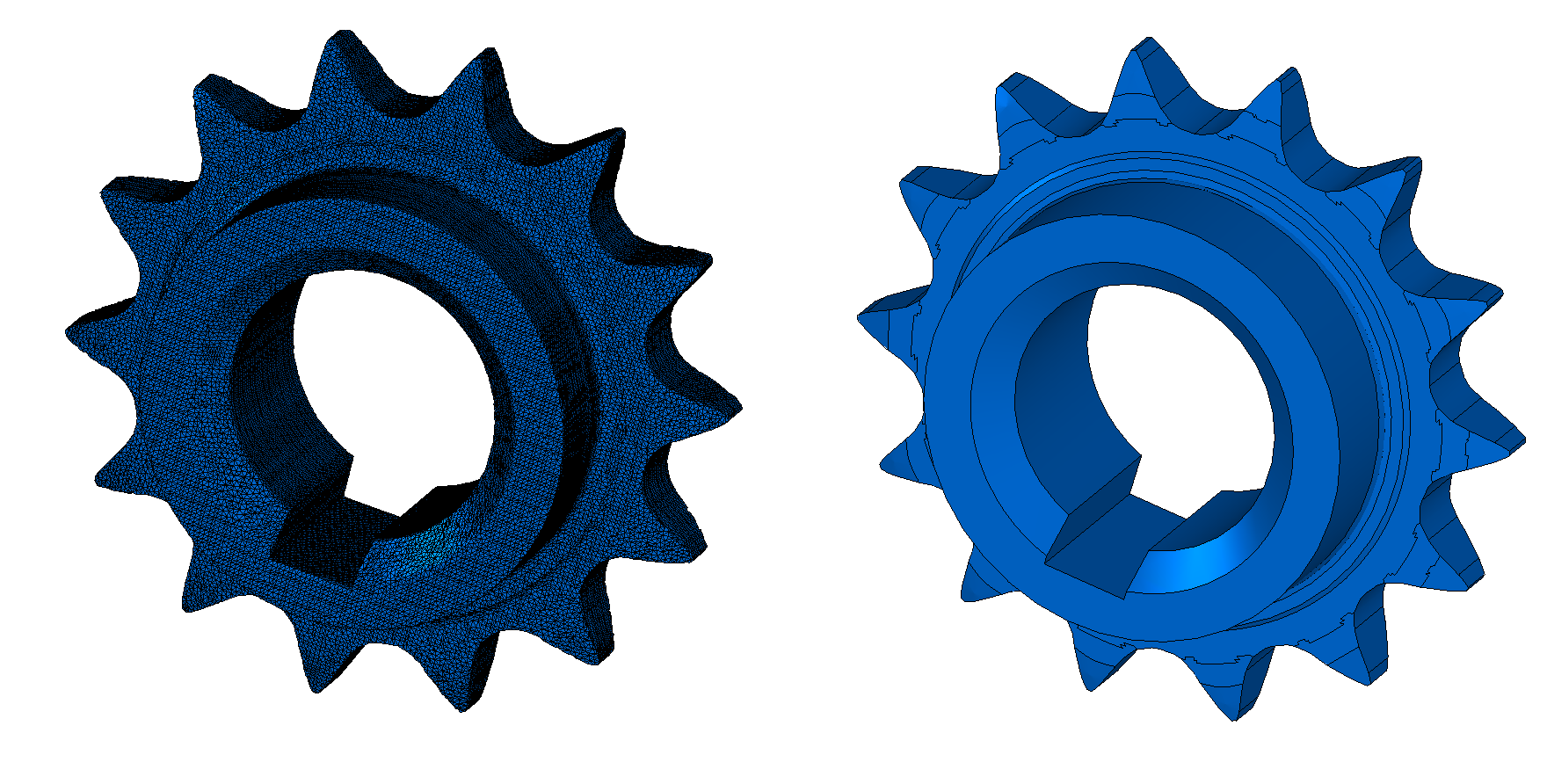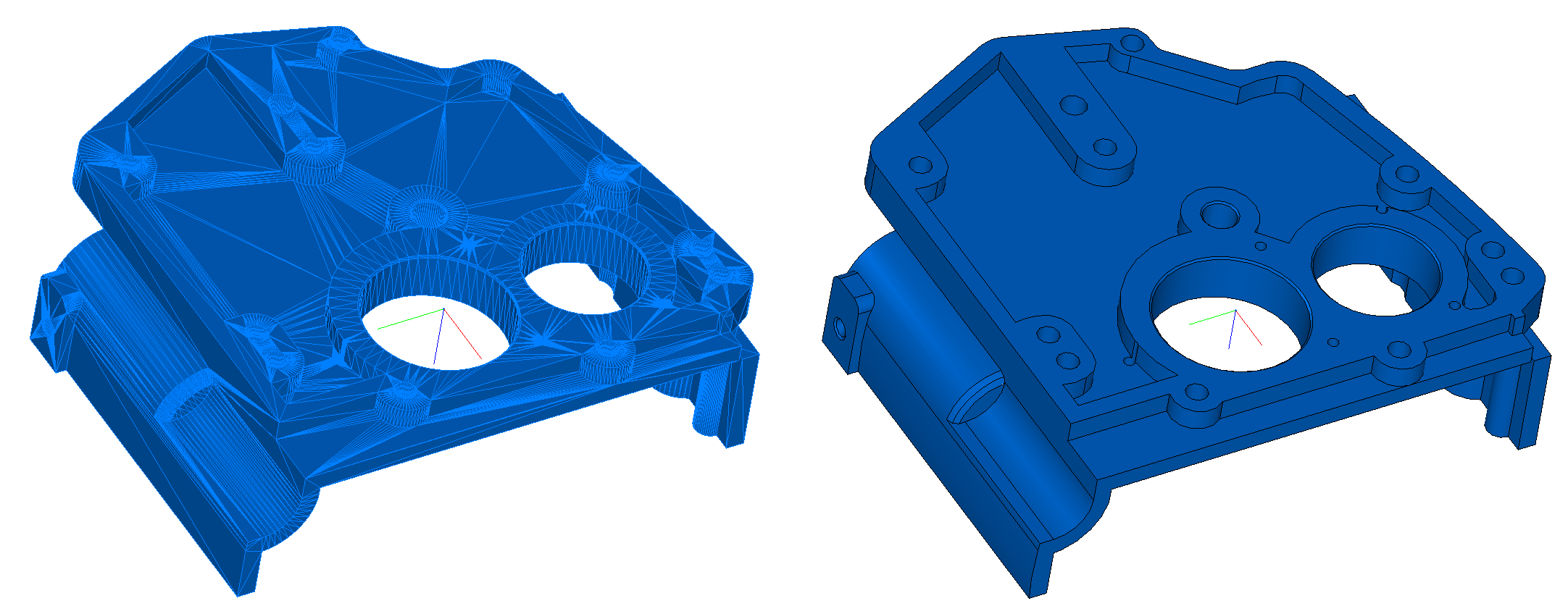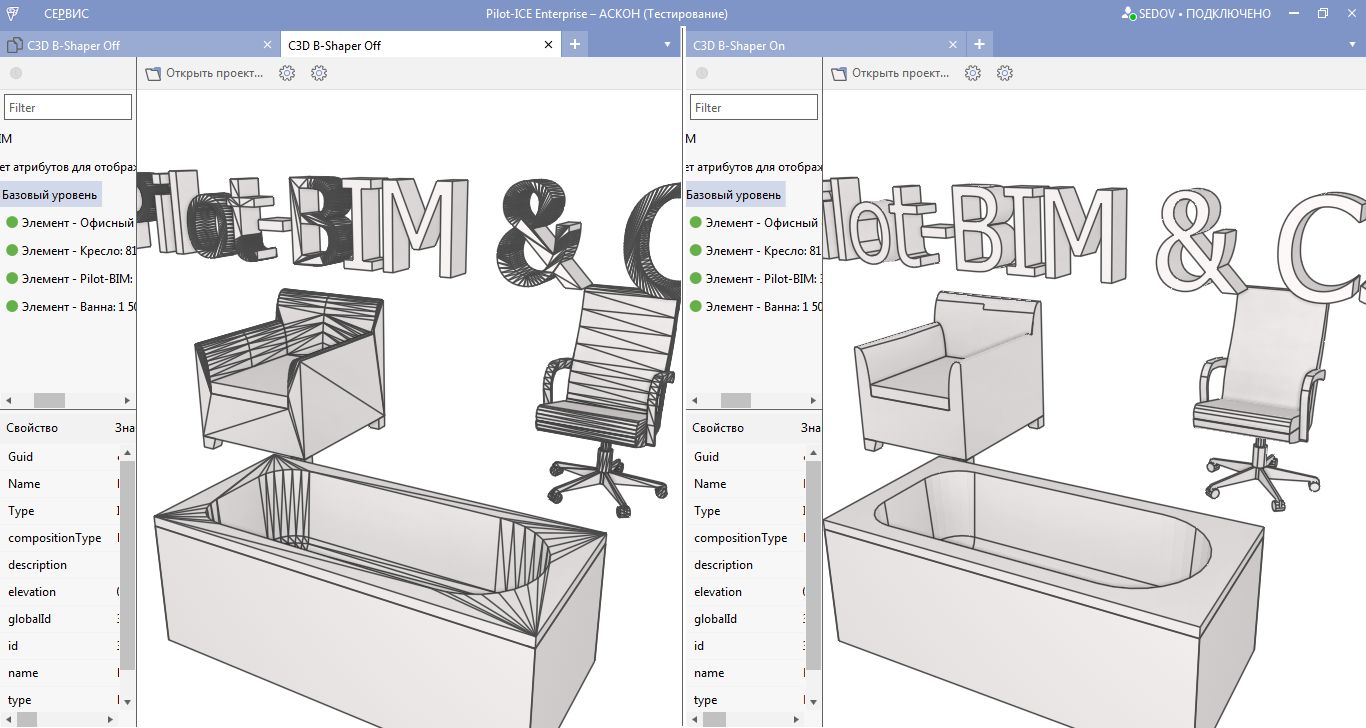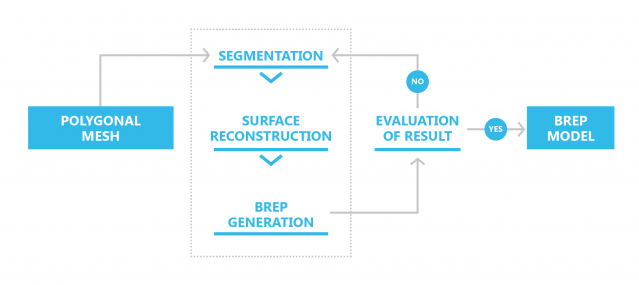Based on C3D Labs own algorithms, C3D B-Shaper makes polygonal models accessible to a wide range of applications:
- Reverse engineering parts with 3D scanner files
- Converting models from online product catalogs
- Post-processing the output from CAE operations
- Enhancing polygonal models by smoothing their grids, decimating surfaces, and applying compression algorithms

About B-rep and polygonal models
More and more data is created not in CAD systems, but comes from external sources, such as online libraries, 3D scanners, and non-CAD 3D modeling software. This data frequently is provided as polygonal models in STL and VRML formats, for example. But the large size of polygonal meshes slows down engineering applications and, most critically, they cannot be edited with typical CAD tools. This makes it difficult to engage with polygonal models in the design process.Yet, B-rep is the primary method of representing 3D models in geometric software such as CAD. This approach has proven the best way to accurately describe objects being modeled, in both mechanical and in architectural design.
What B-Shaper does
C3D B-Shaper solves these problems by converting polygonal meshes to b-rep models. Once converted, users employ standard CAD tools to edit the formerly inaccessible models, such as applying chamfers and performing Boolean operations as well as generating additional representations like projections and sections.For software programs working with many imported polygonal models, C3D B-Shaper accelerates calculations, simplifies visualization, ensures fast and high-quality formation of flat projections, and as a result increases overall program performance.

Case study: developing a BIM application with B-Shaper
ASCON is a software developer (and parent company of C3D Labs) that has been working with C3D B-Shaper to develop Pilot-BIM, a new system for creating and updating a single, global building information model.“We found that by using C3D B-Shaper we improved the readability of BIM elements, and so they look much smoother now,” said Dmitry Poskrebyshev, head of the Pilot-BIM development team. “By reducing the number of edges, navigation through 3D models has become more fluent. This is especially important with large BIM models.”
ASCON continues to experiment with C3D B-Shaper by applying it to non-parametric BIM elements, such as plumbing, furniture, and fittings that are imported into Pilot-BIM in a tessellated IFC format.

How C3D B-Shaper works
Through its API, B-Shaper operates in two modes: automatic and interactive. B-Shaper’s unique algorithm first segments meshes by dividing sets of polygons into subsets (segments), which become prototypes for probable faces. In the next step, selected areas are recognized as elementary surfaces, such as planes, cylinders, cones, spheres, or tori.Intersection curves are calculated between adjacent segments, and then these curves become the basis for constructing edges of the body’s faces.
The operating accuracy of B-Shaper algorithm follows the maximum deviation allowed between the recognized surfaces and the vertices of the underlying polygonal meshes. Users can specify the accuracy they require, or else let B-Shaper determine a default value.
In cases when the deviation of faces from meshes is not known in advance, users can employ a relative accuracy based on the dimensions of the original body. Should the result be unsatisfactory, users are free to change the value of recognition accuracy.

Price and availability
C3D B-Shaper is available for a free 90-day evaluation. Pricing is available upon request.For more information about C3D B-Shaper, please visit https://c3dlabs.com/en/products/c3d-toolkit/b-shaper/.